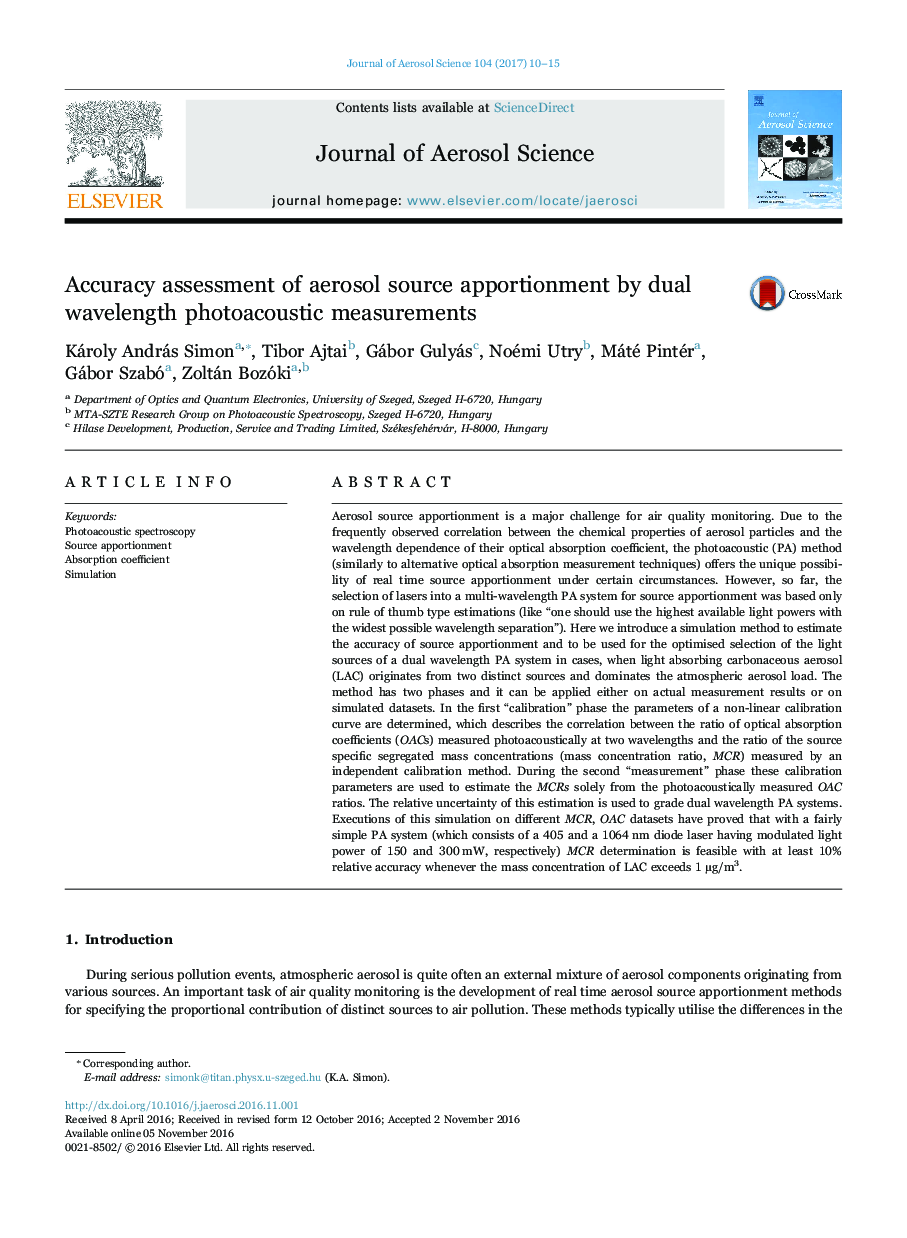| Article ID | Journal | Published Year | Pages | File Type |
|---|---|---|---|---|
| 5753887 | Journal of Aerosol Science | 2017 | 6 Pages |
Abstract
Aerosol source apportionment is a major challenge for air quality monitoring. Due to the frequently observed correlation between the chemical properties of aerosol particles and the wavelength dependence of their optical absorption coefficient, the photoacoustic (PA) method (similarly to alternative optical absorption measurement techniques) offers the unique possibility of real time source apportionment under certain circumstances. However, so far, the selection of lasers into a multi-wavelength PA system for source apportionment was based only on rule of thumb type estimations (like “one should use the highest available light powers with the widest possible wavelength separation”). Here we introduce a simulation method to estimate the accuracy of source apportionment and to be used for the optimised selection of the light sources of a dual wavelength PA system in cases, when light absorbing carbonaceous aerosol (LAC) originates from two distinct sources and dominates the atmospheric aerosol load. The method has two phases and it can be applied either on actual measurement results or on simulated datasets. In the first “calibration” phase the parameters of a non-linear calibration curve are determined, which describes the correlation between the ratio of optical absorption coefficients (OACs) measured photoacoustically at two wavelengths and the ratio of the source specific segregated mass concentrations (mass concentration ratio, MCR) measured by an independent calibration method. During the second “measurement” phase these calibration parameters are used to estimate the MCRs solely from the photoacoustically measured OAC ratios. The relative uncertainty of this estimation is used to grade dual wavelength PA systems. Executions of this simulation on different MCR, OAC datasets have proved that with a fairly simple PA system (which consists of a 405 and a 1064 nm diode laser having modulated light power of 150 and 300 mW, respectively) MCR determination is feasible with at least 10% relative accuracy whenever the mass concentration of LAC exceeds 1 µg/m3.
Related Topics
Physical Sciences and Engineering
Earth and Planetary Sciences
Atmospheric Science
Authors
Károly András Simon, Tibor Ajtai, Gábor Gulyás, Noémi Utry, Máté Pintér, Gábor Szabó, Zoltán Bozóki,
